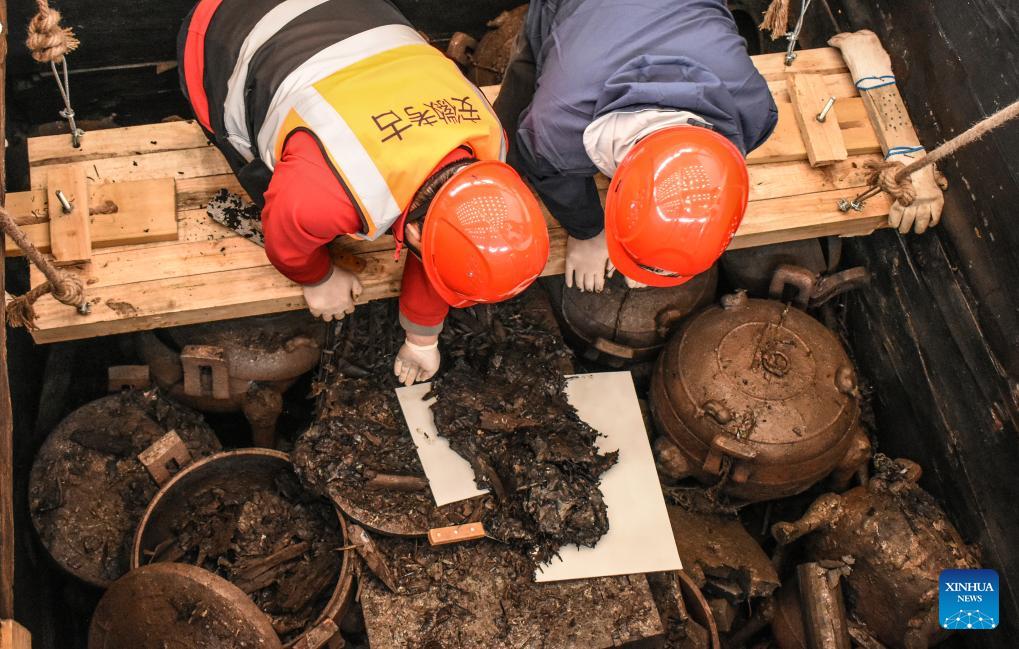Xinhua | April 17, 2024
Archaeologists work at the Wuwangdun tomb discovered in Huainan, east China's Anhui Province, April 6, 2024. The Wuwangdun tomb excavated in east China's Anhui Province has been confirmed as the largest and highest-level tomb from ancient Chu state dating back over 2,200 years, the National Cultural Heritage Administration said Tuesday. The administration made the announcement at a press conference in Huainan City, adding that the tomb discovered in Huainan is the most structurally complex of its kind. (National Cultural Heritage Administration/Handout via Xinhua)
The Wuwangdun tomb excavated in east China's Anhui Province has been confirmed as the largest and highest-level tomb from ancient Chu state dating back over 2,200 years, the National Cultural Heritage Administration said Tuesday.
The administration made the announcement at a press conference in Huainan City, adding that the tomb discovered in Huainan is the most structurally complex of its kind.
Archaeologists focused on excavating the main vertical earth-pit tomb, confirming it as a large structure housing a wooden chambered burial area.
Researchers conducted on-site protection and multi-disciplinary studies of the unearthed artifacts, reinforcing and extracting fragile objects like the chamber planks, bamboo mats and lacquerware.
Concurrent analyses included carbon-14 dating, wood species identification, infrared analysis of the inscriptions, and material and manufacturing studies of the lacquerware and textiles.
The administration vowed to continue archaeological work, artifact preservation and interdisciplinary research at Wuwangdun, aiming to shed light on late Warring States Period Chu rituals, craftsmanship and cultural achievements.
The Warring States Period ran from 475 B.C. to 221 B.C.


